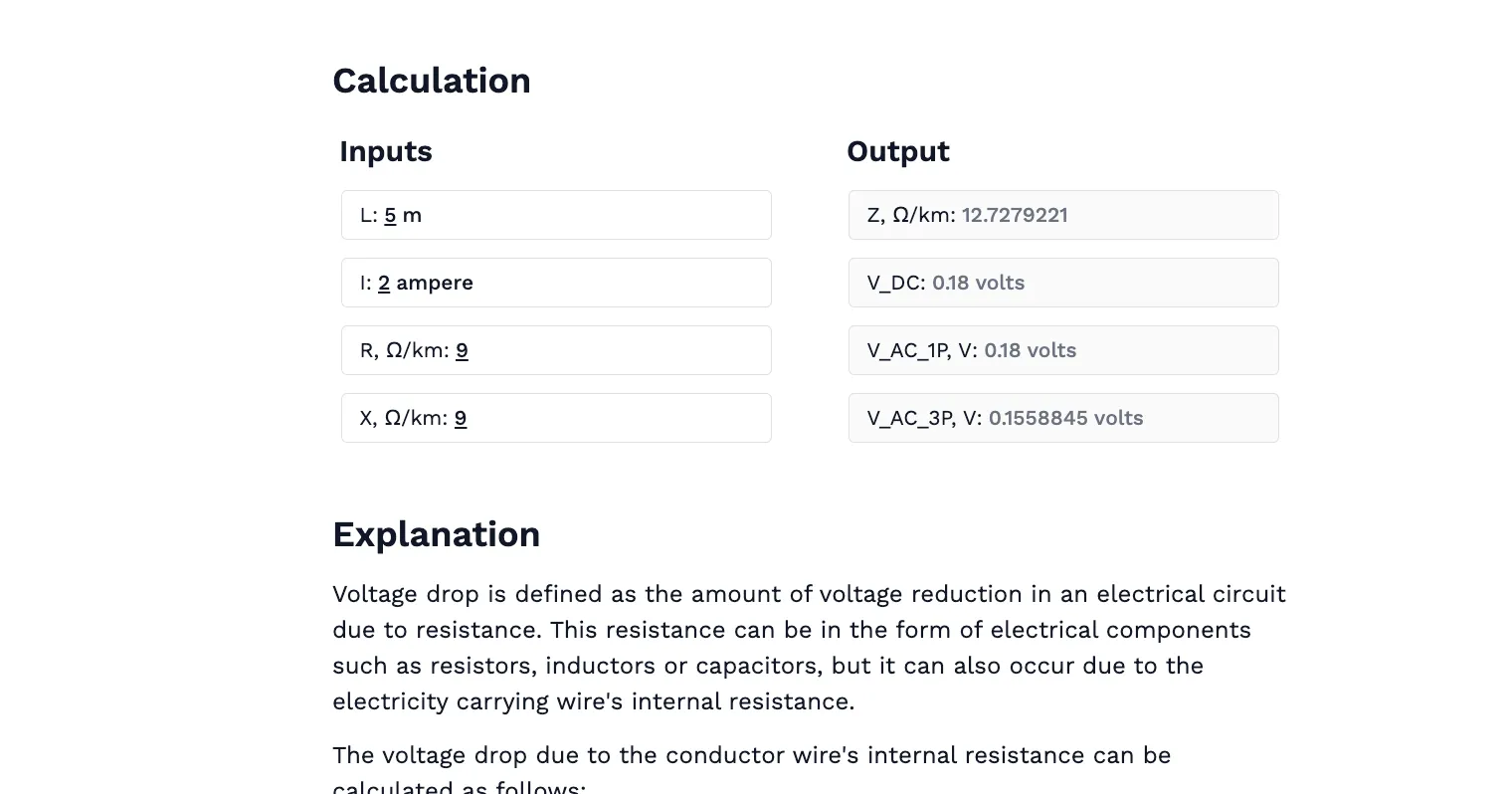Free Wire Voltage Drop Calculator to AS/NZS 3008. Step-by-step, engineering-grade tool with downloadable report.

This template is not available yet. You can sign up and create it yourself!
Or let us know if you'd like to be notified when it’s ready:
About this calculator
The Wire Voltage Drop Calculator According to AS/NZS 3008 is an essential tool for determining voltage drops across wires in both AC and DC systems. By entering the input voltage, rated load current, and distance, you can calculate the expected voltage drop over a length of wire. This helps ensure that the electrical system remains efficient and safe, especially over long distances or in high-demand applications.
This calculator is for:
- Electrical engineers and designers calculating voltage drops in residential, commercial, and industrial installations.
- Contractors and electricians verifying compliance with AS/NZS 3008 standards for wiring systems.
- Students and educators studying electrical systems and voltage drop considerations in practical applications.
The tool allows for quick feasibility checks by letting you input different parameters like voltage, current, and distance to ensure the wire size and system design minimize voltage loss. For detailed theoretical approaches and manual calculations, textbooks like Electrical Wiring Practice by Keith Pethebridge and Ian Neeson or AS/NZS 3008: Electrical Installations can provide further guidance on wire sizing and voltage drop considerations.
Engineering templates
Common calculators
Design guides
FAQs
Why is it important to calculate voltage drop in electrical systems?
Calculating voltage drop is critical to ensuring that electrical devices receive sufficient voltage for proper operation. Excessive voltage drop can lead to equipment malfunction, reduced efficiency, or even damage to electrical devices.
How does distance affect voltage drop in a wire?
As the distance of the wire increases, the resistance in the wire also increases, leading to a greater voltage drop. This means that over long distances, thicker or more conductive wire is required to maintain acceptable voltage levels.
What are the main factors that influence voltage drop?
The main factors affecting voltage drop include the length of the wire, the current being drawn by the load, the wire’s cross-sectional area, and the material of the wire (e.g., copper or aluminum).
Learn about the benefits of using CalcTree on engineering projects!


